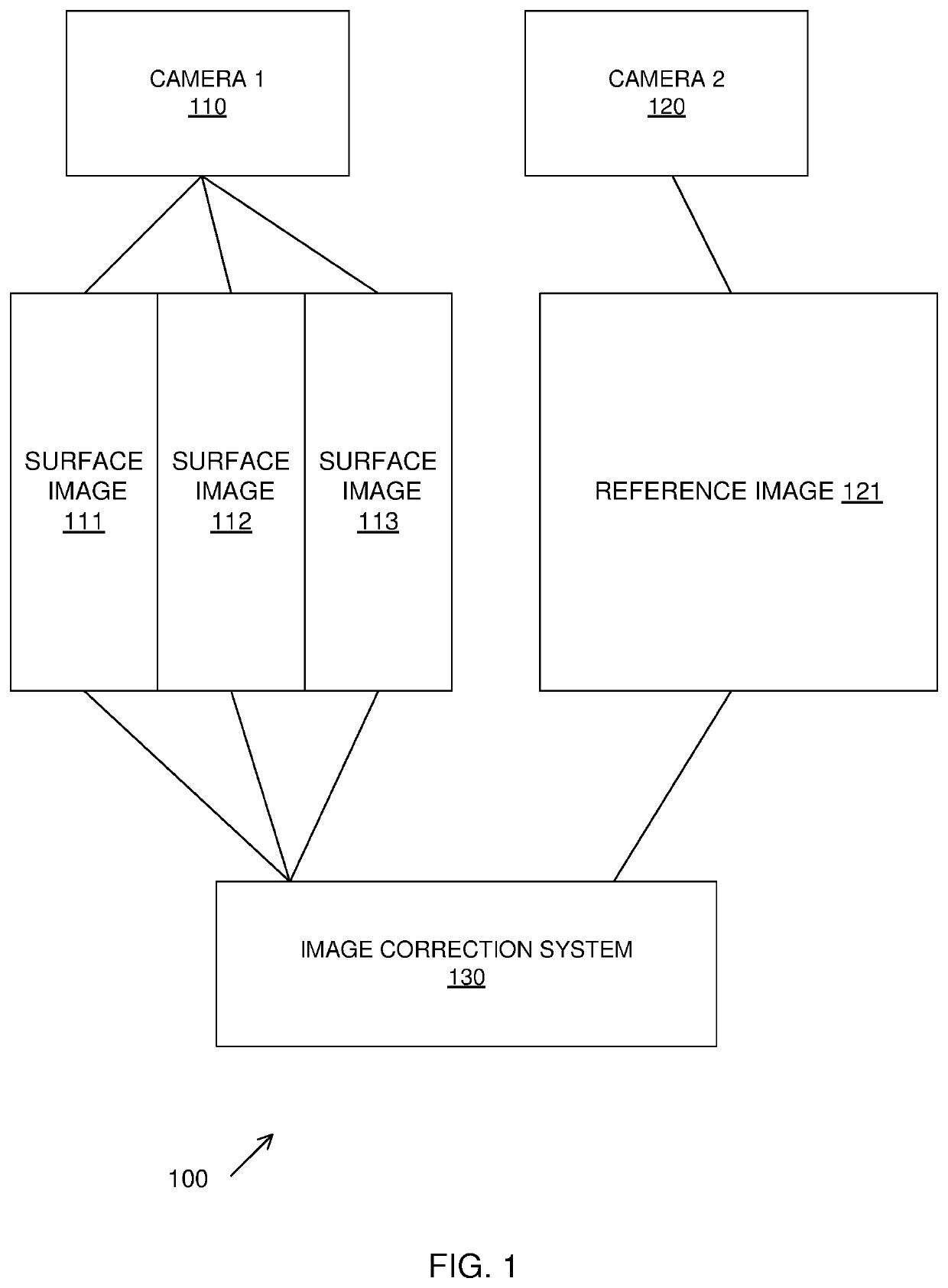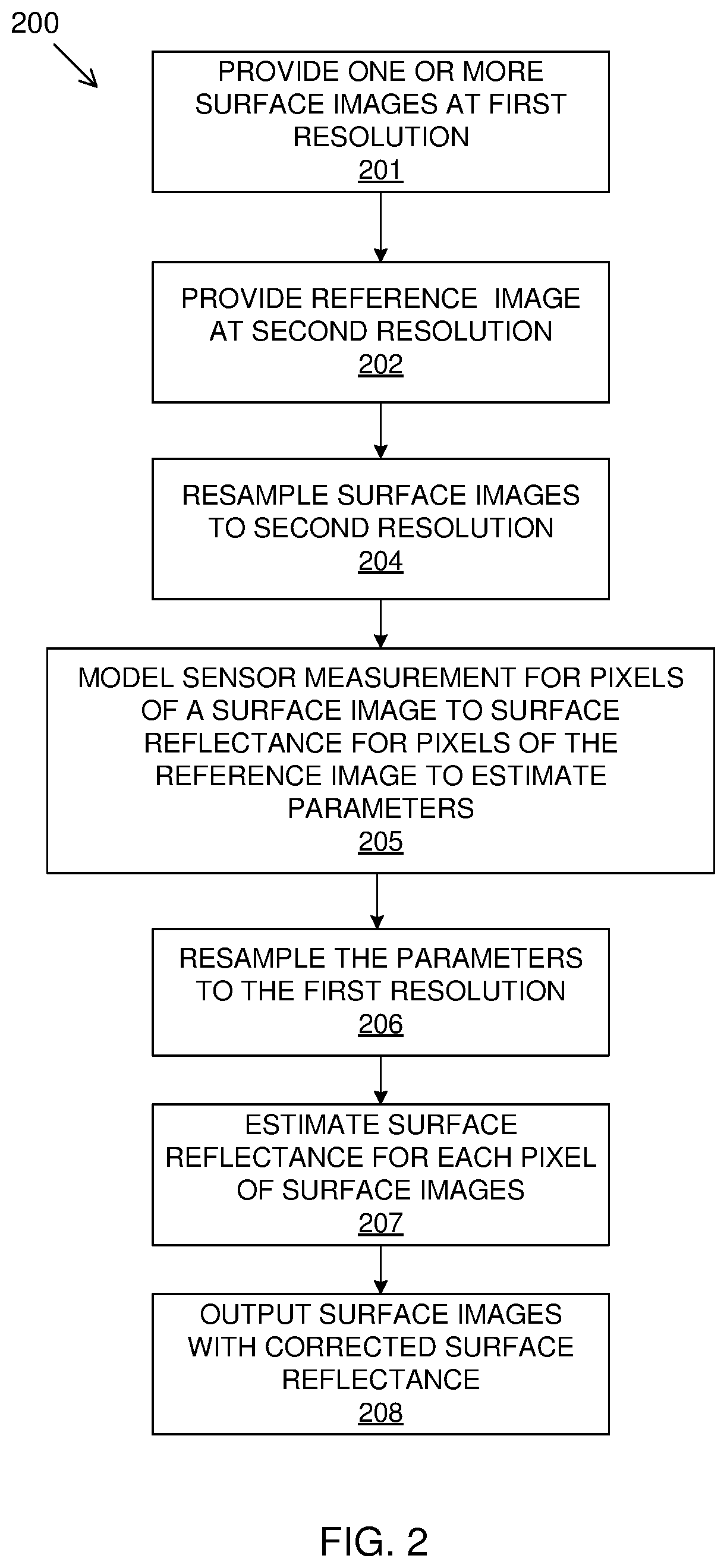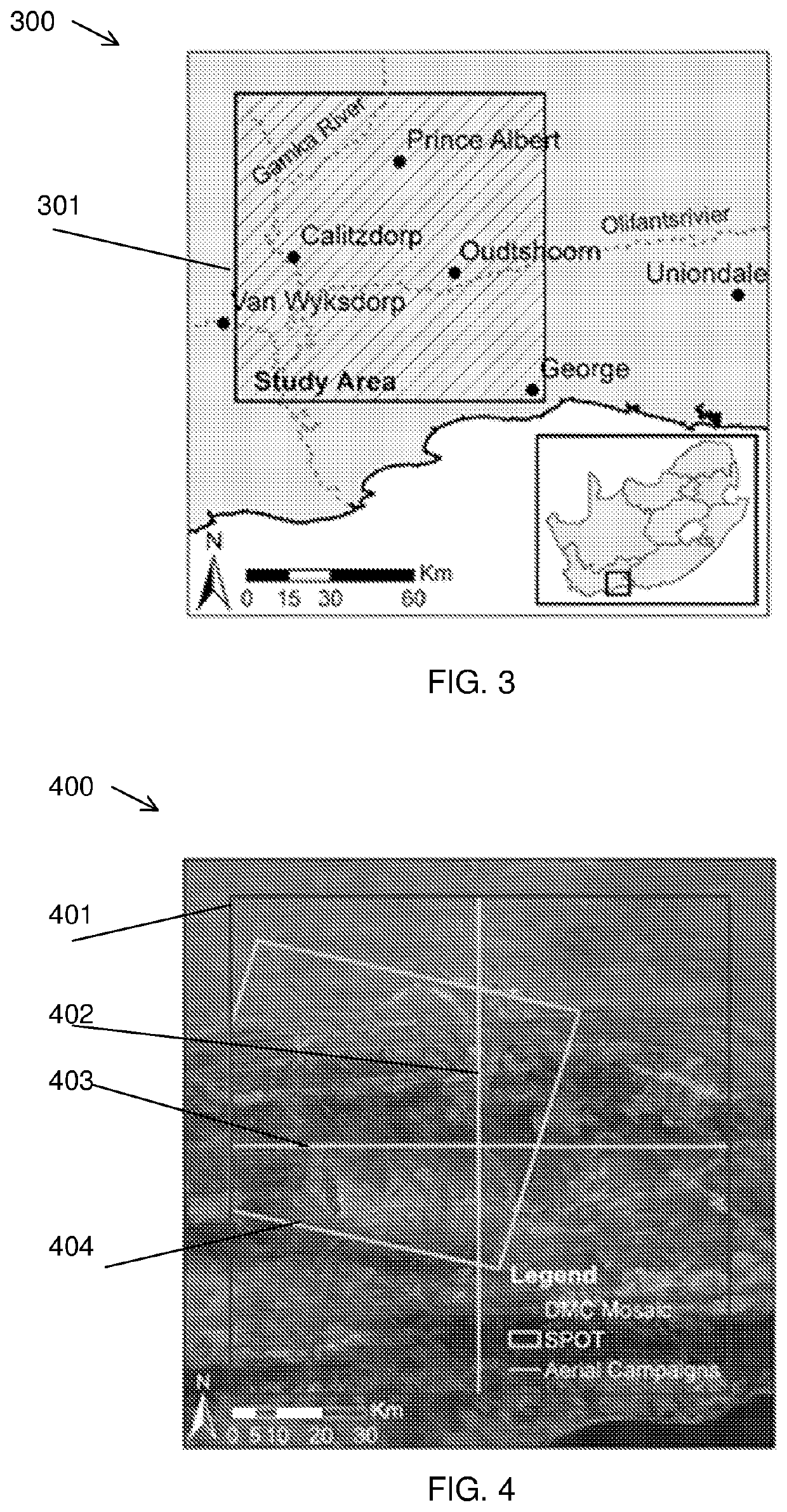Generating radiometrically corrected surface images
a surface image and radiometric correction technology, applied in image enhancement, image analysis, instruments, etc., can solve the problems of inability to quantitative remote sensing, damage to spectral information content, and difficulty in extracting surface reflectance from aerial imagery
- Summary
- Abstract
- Description
- Claims
- Application Information
AI Technical Summary
Benefits of technology
Problems solved by technology
Method used
Image
Examples
Embodiment Construction
[0062]Images may be taken of the Earth's surface in the form of digital source images referred to as surface images. The surface images may include images of the surface of the Earth including ocean or vegetation surfaces, or the surface of other bodies. Such surface images may be obtained by aerial imagery, including drone imagery, or satellite imagery and may be high resolution. Mosaicking multiple surface images to cover an area results in radiometric variation over temporal and spatial extents. While very high resolution (VHR) aerial imagery holds great potential for quantitative remote sensing, its use has been limited by the unwanted radiometric variation over temporal and spatial extents. The described method and system generate radiometrically corrected surface images by using a reference image. The described method is described with multiple surface images being calibrated by a reference image; however, the method may be used to correct one surface image with the reference ...
PUM
 Login to View More
Login to View More Abstract
Description
Claims
Application Information
 Login to View More
Login to View More - R&D
- Intellectual Property
- Life Sciences
- Materials
- Tech Scout
- Unparalleled Data Quality
- Higher Quality Content
- 60% Fewer Hallucinations
Browse by: Latest US Patents, China's latest patents, Technical Efficacy Thesaurus, Application Domain, Technology Topic, Popular Technical Reports.
© 2025 PatSnap. All rights reserved.Legal|Privacy policy|Modern Slavery Act Transparency Statement|Sitemap|About US| Contact US: help@patsnap.com



